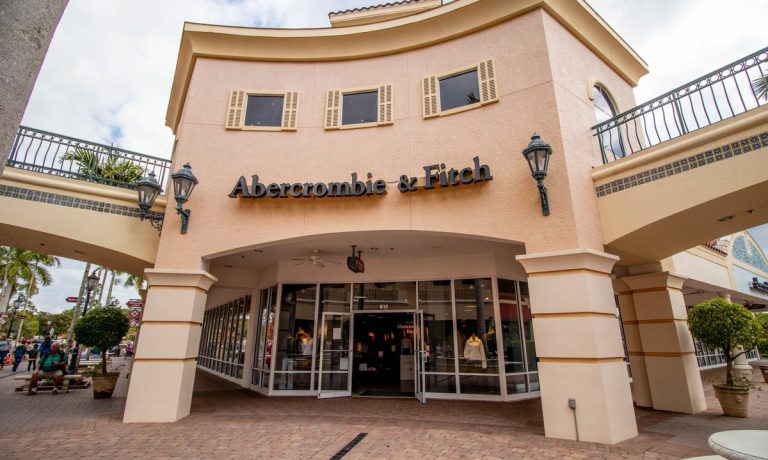Abercrombie & Fitch expects to close about 30 stores this year as it continues to focus on its transition to omnichannel retail sales, company officials said Tuesday (May 24) on an earnings call with investors and analysts.
About one-third of Abercrombie’s store leases are up for renewal this year, a higher percentage than its typical 25%, said Scott Lipesky, executive VP and CFO, who noted the company will focus more on improving the user experience at its stores and collecting more digital data from customers.
“It seems we’re ready to return to some form of normalcy, but we’re also in an extremely inflationary period,” said A&F CEO Fran Horowitz on the call. “We’re keeping a close eye on our consumers. With five brands, we won’t take a one-size-fits-all approach. We’re staying close to our customer and executing to our proven playbook. We believe we are stronger, smarter and faster than ever before.”
Abercrombie & Fitch’s stock tumbled more than 30% in early trading Tuesday, so it seems investors will need to be convinced that the company can execute the plan it laid out as well as what it plans to unveil during its Investor Day June 14, where Horowitz said it will discuss “the next phase of our journey.”
As for the first quarter of fiscal 2022, which ended April 30 and looking forward to Q2 and beyond, “we’re focused on controlling what we can control,” she said, noting inflationary pressures and supply chain issues present some variables that need to be overcome.
Net sales were up 4% companywide to $812.8 million in the first three months of the fiscal year.
Advertisement: Scroll to Continue
Abercrombie & Fitch is also increasing its focus on social commerce, saying it achieved its biggest success in that space in Q1 “and we are not satisfied,” said Horowitz, referring to an upcoming pairing with The Trevor Project and Hollister tie-ins with TikTok and Facebook Live.
Related: Digital Sales a Big Part of Abercrombie & Fitch’s Q4 Story
Abercrombie & Fitch made a successful transition to an omnichannel retailer late last year, largely out of necessity because of the COVID-19 pandemic and its effect on the retail industry for the past couple of years.




